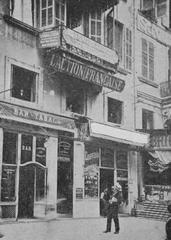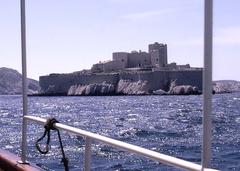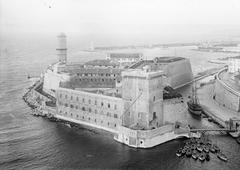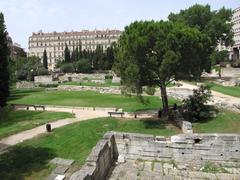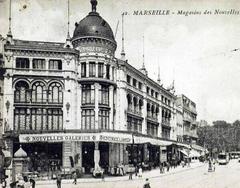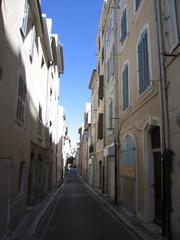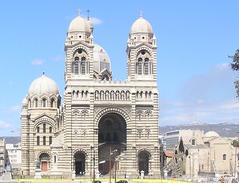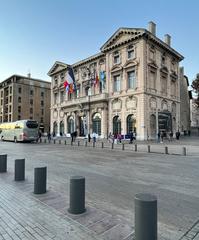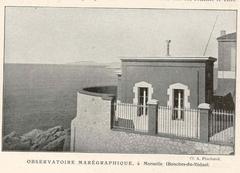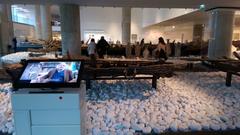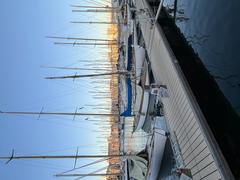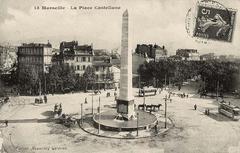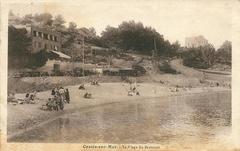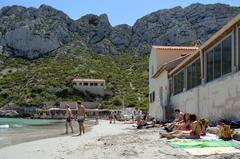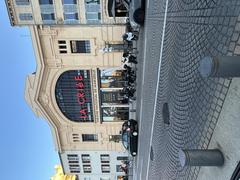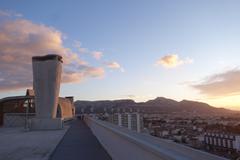French Submarine Alose: Visiting Hours, Tickets, and Guide to Marseille’s Maritime Heritage
Date: 15/06/2025
Introduction
The French submarine Alose (Q33) is a rare and evocative artifact of early 20th-century naval engineering, preserved today as a museum exhibit in Marseille. Standing as the oldest surviving French submarine, Alose offers visitors a unique insight into the dawn of submarine warfare and the technological advancements that defined France’s naval heritage. This comprehensive guide details the history, technical features, visiting information, and cultural significance of the Alose, ensuring you make the most of your journey into Marseille’s maritime past (Wikipedia; Military History Fandom; fr.wikipedia; Musée National de la Marine).
Table of Contents
- Historical Background
- Technical Features and Design
- Visitor Information
- Nearby Marseille Attractions
- FAQ
- Conclusion and Call to Action
- References
Historical Background
Origins and Construction
Commissioned as part of France’s 1900 naval program, Alose (Q33) was one of twenty Naïade-class submarines designed by Gaston Romazotti, a pioneer in French submarine development. The vessel was constructed at the Toulon Naval Dockyard and launched on October 12, 1904. A distinguishing feature was her hull, made from “Roma-bronze” copper alloy, chosen for its resistance to corrosion and pressure (Wikipedia; Military History Fandom).
Service and Operational Role
Alose entered service in July 1907, assigned to coastal defense and patrol duties along the French Mediterranean coast. As part of the first generation of operational French submarines, Alose’s design and operations contributed to the evolution of submarine tactics and crew training. Her dual propulsion system—petrol engine for surface travel, electric motors for submerged movement—was at the forefront of contemporary naval technology (fr.wikipedia).
Decommissioning and Fate
Stricken from the register in May 1914, Alose was repurposed during World War I as a target for aviation experiments. She was stripped of her internal machinery and sunk off Lion Rock during a live bombing exercise in 1918. Unlike many contemporaries, Alose was neither scrapped nor lost in combat, allowing her eventual recovery decades later (fr.wikipedia).
Rediscovery and Preservation
Rediscovered in 1975 by Jean-Pierre Joncheray and the Société Archéologique Subaquatique de Fréjus-Saint-Raphaël, Alose was raised in 1976 with the support of COMEX, a Marseille-based underwater engineering company. After restoration, she was placed outside the COMEX headquarters as a museum exhibit. In 2008, Alose was officially classified as a historical monument, cementing her importance in French naval history (Les Compagnons du Saga).
Technical Features and Design
Hull and Materials
Alose’s single-hull construction utilized Roma-bronze, a proprietary copper alloy that balanced strength, durability, and corrosion resistance—a significant innovation for its era (Wikiwand; Marine Insight). The hull’s streamlined, cigar-shaped profile minimized drag and contributed to her modest underwater speeds.
Dimensions and Crew
- Length: Approximately 23.7 meters
- Surfaced Displacement: ~70 tons
- Crew: 12
The compact dimensions reflected Alose’s primary mission of coastal defense, with minimal crew accommodation and shared operational spaces (World Naval Ships).
Propulsion and Performance
- Surface propulsion: Petrol engine
- Submerged propulsion: Electric motor
- Surface speed: 7.2 knots
- Submerged speed: 5.98 knots
- Surface range: 200 nautical miles at 5.5 knots
- Submerged range: 30 nautical miles at 4.1 knots
The dual propulsion system was typical for the time, offering flexibility but also limiting underwater endurance (World Naval Ships).
Armament and Systems
Alose was armed with two 17.7-inch (450 mm) torpedo tubes, fired using compressed air. The torpedo room was located forward, and reloading was a manual process. Ballast tanks within the hull facilitated diving and surfacing, while rudimentary control surfaces allowed for basic underwater navigation (Marine Insight).
Interior and Crew Life
The cramped, single-deck layout offered little comfort or privacy. Essential systems—control room, battery banks, machinery, and torpedo room—were all contained within the small pressure hull, and conditions could become harsh during extended patrols (Marine Insight).
Visitor Information
Location and Access
- Address: Outside COMEX Headquarters, Boulevard des Océans, Marseille, France
(Coordinates: 43°14′22″N 5°24′09″E) - Getting There: Accessible by public transport or taxi from Marseille city center. Parking is limited; public transport is recommended (Marseille Tourisme).
Visiting Hours and Tickets
- Outdoor Exhibit: The submarine is displayed outdoors and can be viewed at any time, free of charge. There are no formal admission hours.
- Museum Interior (if exhibited at Musée National de la Marine): Typical hours are 10:00 AM–6:00 PM, Tuesday to Sunday. Check the official museum website for up-to-date information, ticket prices, and special events.
Tours and Accessibility
- Guided Tours: No official tours of the submarine itself, but related tours are available through maritime museums and heritage organizations.
- Accessibility: Outdoor display is generally accessible, though terrain may be uneven. Interior access is restricted due to preservation and physical constraints.
- Photography: Permitted for personal use; flash and tripods may be restricted.
Family and Group Visits
- Family-friendly activities and educational materials are available at the museum and through local heritage organizations.
- School and group bookings should be coordinated with the museum or COMEX.
Nearby Marseille Attractions
- Musée National de la Marine (Marseille Branch): Explore France’s rich naval history.
- Vieux-Port (Old Port): Historic harbor with restaurants, markets, and boat tours.
- MuCEM: Museum of European and Mediterranean Civilizations (MuCEM).
- Fort Saint-Jean: Historic fort with panoramic views (Tourist Secrets).
- Le Panier District: Marseille’s oldest neighborhood, known for its picturesque streets and vibrant art.
Frequently Asked Questions (FAQ)
Q: What are the visiting hours for the Alose submarine?
A: The outdoor exhibit at COMEX is accessible at any time. For museum exhibitions, hours are typically 10:00 AM–6:00 PM, Tuesday to Sunday.
Q: Is there an admission fee?
A: No fee for the outdoor exhibit. Museum admission fees apply if visiting the Alose as part of the Musée National de la Marine collection.
Q: Are guided tours available?
A: No official tours of the submarine itself, but related guided tours may be available through local museums.
Q: Is the exhibit accessible for people with disabilities?
A: Outdoor areas are generally accessible, but access inside the submarine is limited.
Q: Can children visit the submarine?
A: Yes, though interior access is limited. Educational programs and family activities are available.
Conclusion and Call to Action
Visiting the French submarine Alose in Marseille is a unique way to experience the legacy of early submarine engineering and to connect with France’s rich maritime history. Whether viewed as an outdoor monument or explored through museum exhibitions, Alose’s story captivates visitors of all ages and interests. Plan your visit, take advantage of guided or audio tours, and enrich your understanding of naval innovation.
For the latest information on visiting hours, tickets, and special events, consult the Musée National de la Marine and Marseille Tourisme. Enhance your experience by downloading the Audiala app for guided tours and stay connected for updates on Marseille’s heritage.
References
- Wikipedia
- Military History Fandom
- fr.wikipedia
- Marseille Tourisme
- World Naval Ships
- Marine Insight
- Les Compagnons du Saga
- Musée National de la Marine
- MuCEM
- Tourist Secrets
